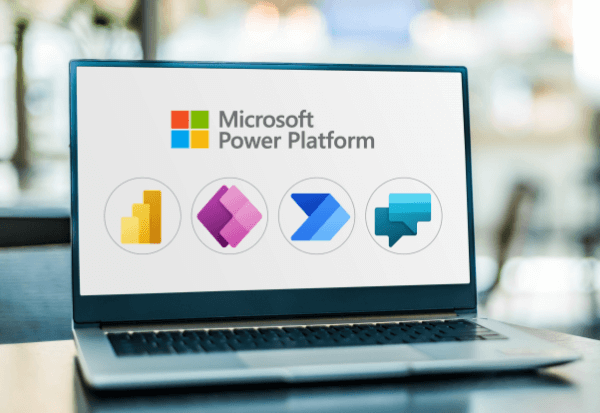Energy such as electricity has become a basic need for human beings. The interesting fact about energy consumption is that 83% of the energy we use comes from fossil fuels, among which oil is the most significant energy source, followed by coal and natural gas. The annual global energy consumption is estimated to be 580 million terajoules, equivalent to 13865 million tons of oil.
If we suppose the business continues as usual, then as per world counts, by 2040, global energy consumption will reach 740 million terajoules. This is comparable to 30 percent growth! If you are interested, you can access the live ‘global energy usage’ at The World Counts website to learn more about such facts.
Let us now discuss energy consumption and the importance of energy management in enterprise building operations. Buildings are initially designed to meet operational needs, performance, technical standards, and planning constraints. Nowadays, facilities are one of the fastest-growing, energy-consuming sectors, representing almost 30% of the worldwide final energy use and more than a quarter of energy-related carbon-dioxide discharges.
Energy consumption is a significant source in enterprise buildings to provide thermal comfort, ventilation, air conditioning system (HAVC), lighting, air quality, and entertainment to their inhabitants. Due to the ever-increasing energy demand, energy management manager/facility managers will face multiple challenges like devising a proper energy management software, managing decentralized energy solutions, complex data collection or data analysis, modeling the energy process for energy savings, and bringing on zero carbon emission. These challenges were constantly changing, meaning that managers need to keep ahead of the latest trends to ensure a building runs efficiently. Another difficulty is implementing these changes, especially while working with a moderate standard budget. It can indeed be challenging to justify the costs of innovative technology to an executive board, even if it is likely to save the company time and money in the long term.
Moving ahead, let us discuss more on mitigating this impact of the growing energy demand. More often, strategies are needed to improve a building’s energy efficiency. However, recent advancements in the Internet of Things (IoT) and Energy Management Solutions (EMS) enable energy management managers to gain deeper insights into building energy consumption. To overcome existing and newer challenges, buildings have Enterprise Energy Management Solutions, also known as a Building Automation System (BAS) in place to help manage the facility by energy management managers and proprietors to increase energy efficiency in modern and existing buildings. This would help them benefit from building an energy management system to decrease energy use.
Enterprise energy monitoring solutions are integrated, computerized applications for monitoring and controlling the building’s energy needs. The answer is usually installed in extensive facilities that require massive electrical, mechanical, and HVAC systems. It consists of software and hardware through which the appliances, equipment, and devices in a building are integrated and interoperated. The solution supplies indoor thermal comfort and creates a safe and healthy environment within residential buildings, including institutional, commercial, and industrial buildings, along with reducing energy consumption.
What are the Objectives of Energy Management?
Ultimately, energy management is the key to conserving energy and saving money. Following are some of the main objectives and advantages of enterprise energy management:
- Net Zero Carbon: Drops fossil fuel use for heating, using on-site and off-site renewable energy, reduces the use of high global warming potential refrigerants and low carbon emissions.
- The decline in running costs: Real-time monitoring, remote management, and controlling energy use in plants and buildings by keeping a healthy balance.
- Optimise power consumption: Energy consumption reduces operational costs and improves well-being and productivity by optimizing power consumption with intelligent system solutions.
- Reduces pollution: Reduces energy consumption by using an energy management system following the Clean Growth Strategy by meeting environmental targets.
- Predictive Maintenance: The solution improves performance by communicating distinct levels of alarm conditions allowing the system user to act quickly on the issues before they cause a problem with predictive analytics.
- Improved Users Comfort: Including intelligent sensors and automated HVAC control with easy decision-making for energy saving as user comfort.
- Adapts energy usage based on needs: Advanced ML (Machine Learning) and AI (Artificial Intelligence) solutions with IoT sensors allow an enterprise to predict future occupancy trends and take actions intelligently.
At Happiest Minds, we offer high-quality, emerging technology solutions for enterprise energy management that are smartly engineered for each site. This considers the key strategies for energy management that gives advanced benefits and the confidence to property owners, facility managers, decision-makers, and end-users that they will be able to manage the energy usage of their infrastructure, achieve energy efficiency, and gain complete cost savings while lowering environmental impacts with zero carbon emission.

is working as a Lead Business Analyst at Happiest Minds Technologies.
He has 8 years of IoT industrial products design and development experience. He won multiple fellowship awards from Internet Society (ISOC), South Asian Networks Operator Group (SANOG), Asia Pacific School on Internet Governance (APSIG), and recognized in 2016 and 2017 as one of the Top 8 IoT Thought Leaders for his contribution towards the advancement of IoT in India. He is actively involved in the Internet Engineering Task Force (IETF) working groups to contribute to IoT protocols standardization and research-based contributions in IEEE, APAN and many more conferences and journals. One of the Internet Society (ISOC) trained moderators for the ‘Building Wireless Community Networks’ in India.




